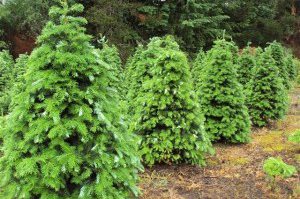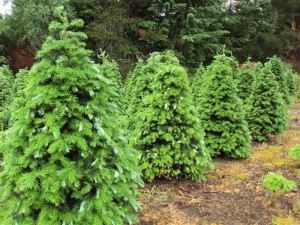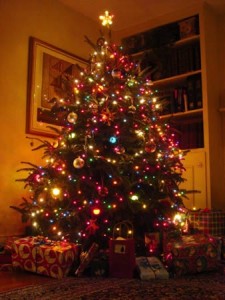
Christmas Trees: Real or Fake?
 Being in the landscaping business, I’m sure you can guess which side of the fence I’m on in this one. I have yet to come across a fake tree that has that wonderful pine scent that immediately evokes images of Christmas. Each year, my surprise is renewed regarding the myths that persist surrounding the “real vs. fake” debate. So, I decided I would dedicate a blog post to a few of the more prevalent myths and “arguments” I hear from folks regarding real and fake trees. (And just for the record, I am not in the Christmas tree business.)
Being in the landscaping business, I’m sure you can guess which side of the fence I’m on in this one. I have yet to come across a fake tree that has that wonderful pine scent that immediately evokes images of Christmas. Each year, my surprise is renewed regarding the myths that persist surrounding the “real vs. fake” debate. So, I decided I would dedicate a blog post to a few of the more prevalent myths and “arguments” I hear from folks regarding real and fake trees. (And just for the record, I am not in the Christmas tree business.)
Buy American
One of the best reasons I can think of to buy a real tree is that when you do, you are helping support an American farmer. According to the National Christmas Tree Association, most of the nearly 30 million live Christmas Trees that will be sold this year come from farms. Trees are a crop, planted by farmers to be used specifically as Christmas trees, the same way farmers grow fruits and vegetables for us to eat. Close to half a billion trees are currently growing on tree farms in the U.S. alone. There are 100,000 people employed in America’s Christmas tree industry and nearly 15,000 Christmas Tree farms across the United States. On the other hand, 85% of artificial trees are imported from China.
Go Green
The other argument I hear a lot in the real vs. fake debate is that in some convoluted way, fake plastic trees are more environmentally friendly. This one I don’t get at all. No one is “saving a tree” when they go artificial. While they are growing, real trees provide a habitat for wildlife and generate carbon dioxide. After Christmas, real trees are biodegradable and recyclable; they make great mulch. Fake trees begin life in a factory and last an average of six to nine years before they end up in a landfill.
Be Reasonable
Another issue often raised is that real trees are a fire hazard. When you start examining the statistics on this, the argument falls apart. In reality, Christmas tree fires are rare (that’s one of the reasons they make the news). And nearly 30% of them involve artificial trees. So if you consider that over 35 million real and fake trees are sold every year, the average 240 fires is a miniscule fraction of a percent. Then there’s the weird fact that according to the National Fire Protection Association, 18% of the fires that do occur are intentionally set (ponder that one). Another 20% of Christmas tree fires are caused by a heat source too close to the tree. (I can think of lots of things that put too close to a heat source for a prolonged period of time would catch on fire). With these odds, I’m simply not convinced the label “fire hazard” applies.
At the end of the day, I think what it really gets down to is convenience. Some people think taking a few minutes a day to water the tree and vacuum up random pine needles is a hassle. I personally think it’s no big deal and worth it for the pleasure a live tree brings. Thankfully, I’m in the majority. This year, Americans will purchase between 25 and 30 million live Christmas trees – more than three times the number of fake trees sold every year. Who says the Christmas spirit isn’t “alive” and well – and living?